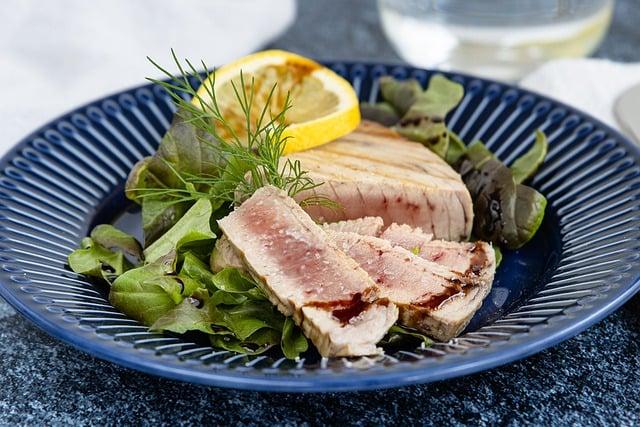Once upon a time in a cozy little house, a curious cat named Whiskers discovered a mysterious box on the kitchen counter. The tantalizing aroma wafting from it was irresistible. With a leap, he landed beside it, eyes wide with excitement. But just as he was about to paw it open, a wise old dog named Rufus trotted in. “Stop right there, Whiskers! That’s chocolate! It’s a no-go for cats!” Whiskers blinked, realizing that some treats were meant for humans only. With a sigh, he settled for his favorite tuna instead, grateful for Rufus’s timely warning.
Table of Contents
- Understanding the Feline Digestive System and Its Limitations
- Common Human Foods That Pose Risks to Cats
- Toxic Plants and Substances to Keep Away from Your Cat
- Safe Alternatives: Healthy Treats for Your Feline Friend
- Q&A
Understanding the Feline Digestive System and Its Limitations
The feline digestive system is a marvel of evolution, specifically designed to process a diet that is primarily carnivorous. Unlike humans, cats have a shorter gastrointestinal tract, which allows for quicker digestion of protein-rich foods. Their stomachs are highly acidic, enabling them to break down meat efficiently and kill harmful bacteria. However, this unique anatomy also means that cats are ill-equipped to handle certain foods that may be harmless or even beneficial to other animals.
One of the most significant limitations of a cat’s digestive system is its inability to process carbohydrates effectively. While some commercial cat foods contain grains and fillers, these ingredients can lead to digestive upset and obesity in felines. Cats lack the necessary enzymes to break down complex carbohydrates, making it crucial for their diet to be high in protein and low in carbs. This is why foods like bread, pasta, and certain fruits should be avoided, as they can cause gastrointestinal distress.
Additionally, certain human foods are toxic to cats, posing serious health risks. For instance, **onions** and **garlic** can damage red blood cells, leading to anemia. **Chocolate** contains theobromine, which is highly toxic to cats, and even small amounts can result in severe reactions. Other foods to steer clear of include **grapes** and **raisins**, which can cause kidney failure, and **caffeine**, which can lead to heart palpitations and restlessness. Understanding these dangers is essential for any cat owner.
Moreover, while some cats may enjoy dairy products, many are lactose intolerant, meaning they cannot properly digest lactose found in milk and cheese. This can lead to diarrhea and stomach discomfort. It’s also important to note that **raw fish** can pose a risk due to the potential presence of harmful bacteria and parasites. Therefore, while it may be tempting to share your meals with your feline friend, it’s vital to be aware of what is safe and healthy for their unique digestive system.
Common Human Foods That Pose Risks to Cats
While it may be tempting to share your meals with your feline friend, many common human foods can be harmful to cats. **Chocolate**, for instance, contains theobromine, which is toxic to cats and can lead to serious health issues, including heart problems and seizures. Even small amounts can be dangerous, so it’s best to keep all chocolate products well out of reach.
Another food to avoid is **onions and garlic**. These ingredients, often found in various dishes, can damage a cat’s red blood cells, leading to anemia. Symptoms may not appear immediately, but they can include lethargy, weakness, and a decrease in appetite. It’s crucial to be vigilant about any foods that may contain these ingredients, including sauces and seasonings.
**Dairy products** are often thought to be a treat for cats, but many adult cats are lactose intolerant. Consuming milk or cheese can lead to digestive upset, including diarrhea and stomach cramps. Instead of dairy, consider offering water or specially formulated cat treats that are safe for their digestive systems.
Lastly, **grapes and raisins** are deceptively dangerous. While they may seem harmless, these fruits can cause kidney failure in cats, even in small quantities. Symptoms of toxicity can include vomiting, lethargy, and loss of appetite. Always be cautious about what you leave within your cat’s reach, as even a small snack can have serious consequences.
Toxic Plants and Substances to Keep Away from Your Cat
When it comes to keeping your feline friend safe, awareness of their environment is crucial. Many common household plants can pose serious health risks to cats. For instance, **lilies** are particularly dangerous; even a small amount can lead to kidney failure. Other plants to be cautious of include **poinsettias**, which can cause mild gastrointestinal upset, and **azaleas**, known to induce vomiting and diarrhea. Always ensure that your home is free from these toxic flora to protect your curious companion.
In addition to plants, certain substances found around the house can be harmful to cats. **Essential oils**, while popular for their aromatic properties, can be toxic if ingested or absorbed through the skin. Oils such as **tea tree**, **eucalyptus**, and **peppermint** should be kept out of reach. Similarly, **cleaning products** containing bleach or ammonia can lead to severe respiratory issues or chemical burns if your cat comes into contact with them. Always opt for pet-safe alternatives when cleaning your home.
Food items that are safe for humans can be hazardous for cats. **Onions** and **garlic**, whether raw, cooked, or powdered, can damage red blood cells and lead to anemia. Additionally, **chocolate** contains theobromine, which is toxic to cats and can cause heart problems and seizures. Even seemingly harmless foods like **grapes** and **raisins** can lead to kidney failure in some felines. It’s essential to be vigilant about what you leave within your cat’s reach.
Lastly, be mindful of medications and supplements. Many over-the-counter drugs, such as **ibuprofen** and **acetaminophen**, are extremely toxic to cats and can result in severe health complications or even death. Always store medications securely and consult your veterinarian before giving any new supplements or treatments. By being proactive and informed, you can create a safe haven for your beloved pet, free from the dangers of toxic plants and substances.
Safe Alternatives: Healthy Treats for Your Feline Friend
When it comes to treating your cat, it’s essential to choose options that are not only delicious but also safe for their health. Many pet owners may be tempted to share their snacks with their furry companions, but it’s crucial to remember that not all human foods are suitable for cats. Instead, consider offering them healthy alternatives that cater to their dietary needs while satisfying their taste buds.
One great option is to provide freeze-dried meat treats. These snacks are packed with protein and retain the natural flavors that cats love. You can find a variety of freeze-dried options, including chicken, turkey, and fish. They are easy to digest and can be a fantastic way to reward your feline without compromising their health.
Another delightful treat is catnip-infused goodies. Many cats are naturally attracted to catnip, and incorporating it into treats can make snack time even more enjoyable. Look for treats that are made with organic catnip and wholesome ingredients, ensuring that your cat gets a flavorful experience without any harmful additives.
Lastly, consider offering homemade treats made from safe ingredients. Simple recipes using cooked chicken, pumpkin, or even plain yogurt can be a hit with your cat. Just be sure to avoid any ingredients that are toxic to felines, such as onions, garlic, or chocolate. By preparing treats at home, you can control the ingredients and create a healthy snack that your cat will adore.
Q&A
-
What human foods are toxic to cats?
Certain human foods can be harmful or even fatal to cats. These include:
- Chocolate: Contains theobromine, which is toxic to cats.
- Onions and garlic: Can damage red blood cells and lead to anemia.
- Grapes and raisins: May cause kidney failure in some cats.
- Alcohol: Even small amounts can be dangerous.
-
Are dairy products safe for cats?
While many people think of cats as lovers of milk, most adult cats are lactose intolerant. This means:
- They may experience digestive upset, including diarrhea.
- It’s best to avoid giving them milk and other dairy products.
-
Can cats eat fish?
Fish can be a tasty treat for cats, but it should be given in moderation. Consider the following:
- Raw fish can contain harmful bacteria and parasites.
- Too much fish can lead to nutritional imbalances.
- Always cook fish thoroughly and remove any bones before serving.
-
What about cat food?
Not all cat food is created equal. When choosing cat food, keep in mind:
- Look for high-quality brands that meet AAFCO standards.
- Avoid foods with excessive fillers or artificial additives.
- Consult your veterinarian for recommendations based on your cat’s specific needs.
safeguarding your feline friend’s health means being mindful of their diet. By steering clear of harmful foods, you ensure a happy, thriving cat. Remember, a little knowledge goes a long way in keeping those whiskers twitching with joy!

大家好,我是彼得潘,專業的手法身體治療師。我喜歡探索和研究各種主題,並透過與人工智慧的合作分享專業、實用、有趣的文章。我們定期進行人工審核,以確保內容的準確性。如果您發現文章中有任何不準確的地方,請隨時與我們聯繫,我們會及時糾正。您可以透過 [email protected] 與我們聯繫。



